Mansion in the front, dance hall in the back: Inside a KC building with a wild history
Inside Look is a Star series that takes our readers behind the scenes of some of the most well-known and not-so-well-known places and events in Kansas City.
Tony Caldwell gets a lot of questions about the building he owns at the intersection of 31st and Paseo.
“You look at the front side of it, and it looks so nice, little bitty, and then you turn the corner and it just keeps going and going,” said the leader of the Justice and Dignity Center, a social services organization.
The nonprofit’s visitors are not the only ones curious about the building, which looks like a mansion from the front, with a long structure extending the whole length of the lot.
Reader Alex wrote into The Star, “I would like to know the history of the old house at 3114 Paseo that has a huge structure built onto the back.”
Once accessible by a wide stone porch, the house’s original front door is now boarded off, but you can see where it used to be from the inside. Scale-like trim and a bow window hide alongside drop-ceiling tiles and carpet, a reminder that the structure was built in the early 1900s.
Originally a private home, 3114 Paseo was turned into a dance hall and union meeting space in the early 1920s with a three-story addition, including an auditorium more than 100 feet long. The building, known as Carpenters’ Hall, was a busy venue for social and union activities during its heyday in the 1920s and 30s.
Now, the auditorium is largely unused. The Star recently got a tour of the building, where the Justice and Dignity Center holds meetings and meals in parts of the space.
‘Solid stone residence’
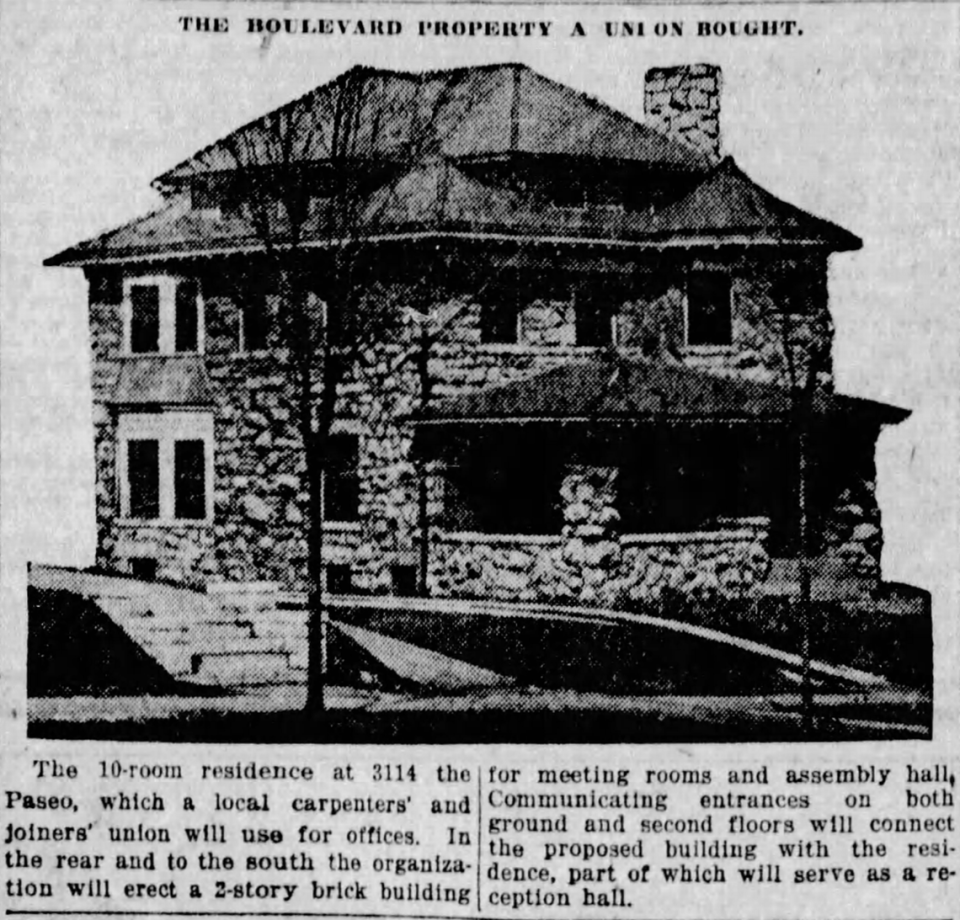
Back when it was a private residence, it was occupied by the Benton family. The Kansas City Star and Times first mentioned the family in 1909. C.G. Benton, the patriarch, was described as a “prominent grain dealer of this city,” and worked as a lawyer and school teacher before rising to lead the Benton Grain company.
The family held gatherings in their Kansas City home. One 1909 event thrown by C.G. Benton’s daughter was described in The Star as “an informal luncheon at her home, 3114 the Paseo. A large mound of violets adorned the table.” Less than two weeks later, she was married at the home.
While away from their Paseo home in 1916, tragedy struck the family. C.G. Benton dropped dead while on vacation in Colorado with his wife and daughter. The Kansas City Star speculated about the 61-year-old’s death, “it is believed mountain climbing may have overtaxed his strength.”
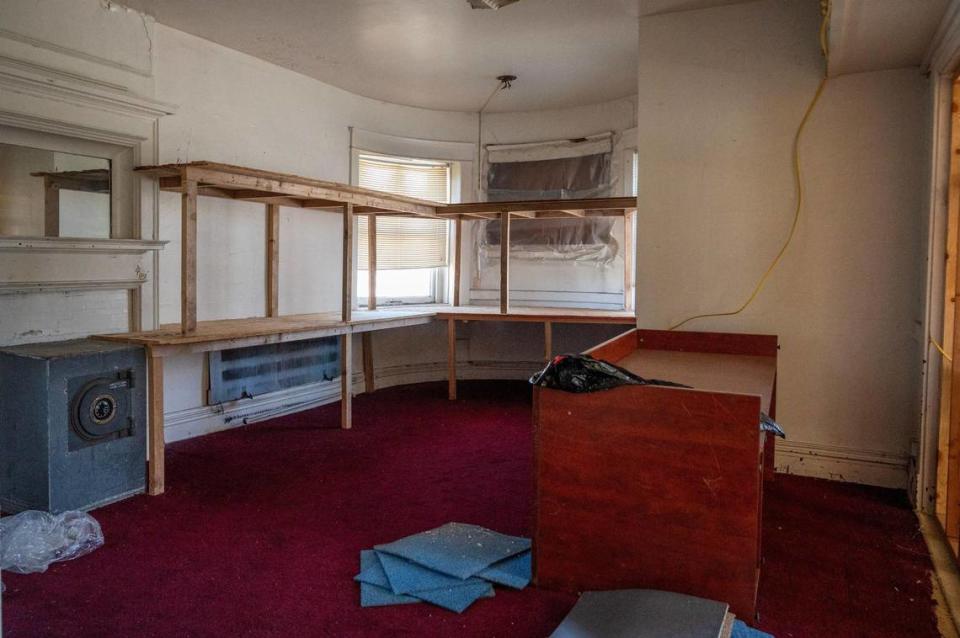
Five years after Benton’s 1916 death, the house was put up for sale. A 1921 advertisement touted the “solid stone residence, 11 rooms, all large; billiard room with table. Hot water heat.”
Dances, music and an assassination
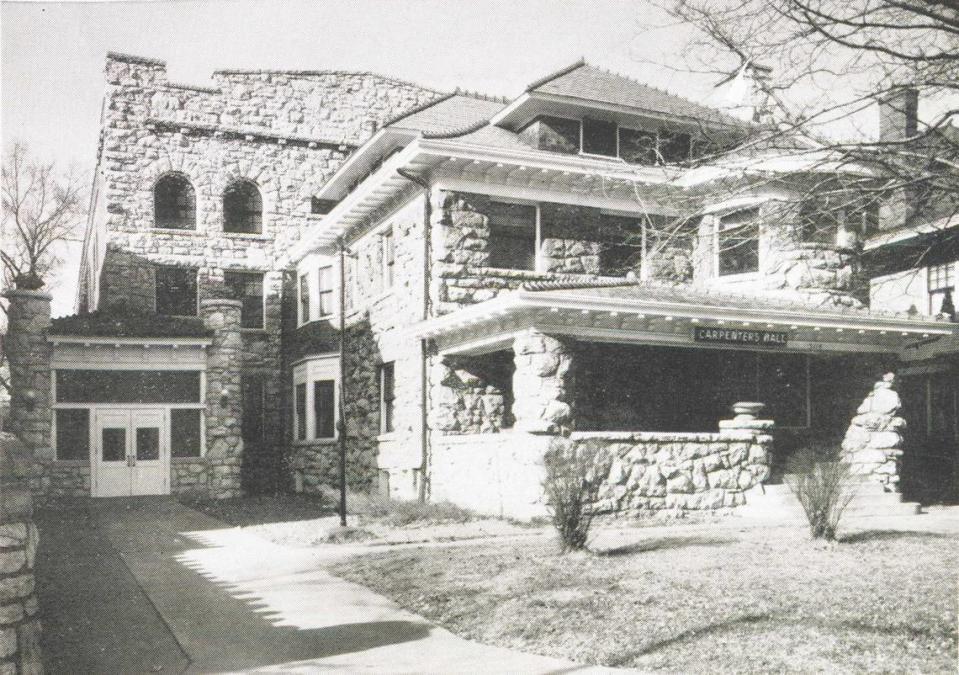
With the same stone on the facade, the addition seamlessly connects with the house structure on two stories. Though newer than the house, it is still almost a century old. In 1923, the Carpenters and Joiners union bought the building in 1923 for $27,500, and built a $50,000 addition off the back, according to The Star.
The 1,800 member-union broke in the building with a “Dancing Dedication Ball” on Dec. 27, 1924, according to the Kansas City Journal. Thus began a long tenure of Carpenters’ Hall, as it was known, as both a labor union and nightlife hub in the 1920s and 30s.
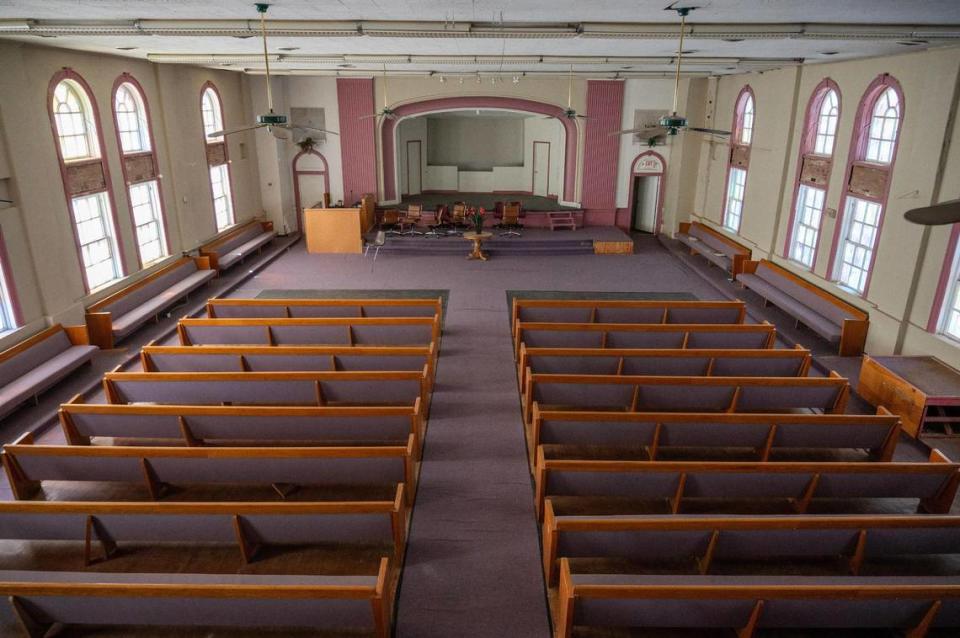
A 1924 Kansas City Star notice said, “Kum out and kut kapers with the Kanny Karpenters in their keen hall.”
In the 1930s, the venue held dances three nights a week, with beauty pageants and the occasional standathon, an endurance standing contest popular in the Great Depression. A 1931 event featured, “slow, tempting fox trots, dreamy waltzes, hot rhythm numbers as you like them.” During the summer of 1930, advertisements in newspapers touted the venue’s “30—electric fans—30.”
Opponents to Kansas City’s Pendergast regime, nicknamed “rabbits,” held their yearly celebrations at the place. In 1929, thousands of attendees ate “Two Large Pieces of Fried Rabbit, One Pickle, Olives and Celery, A Small Loaf of Bread, Cup Cakes, Cup of Coffee.”
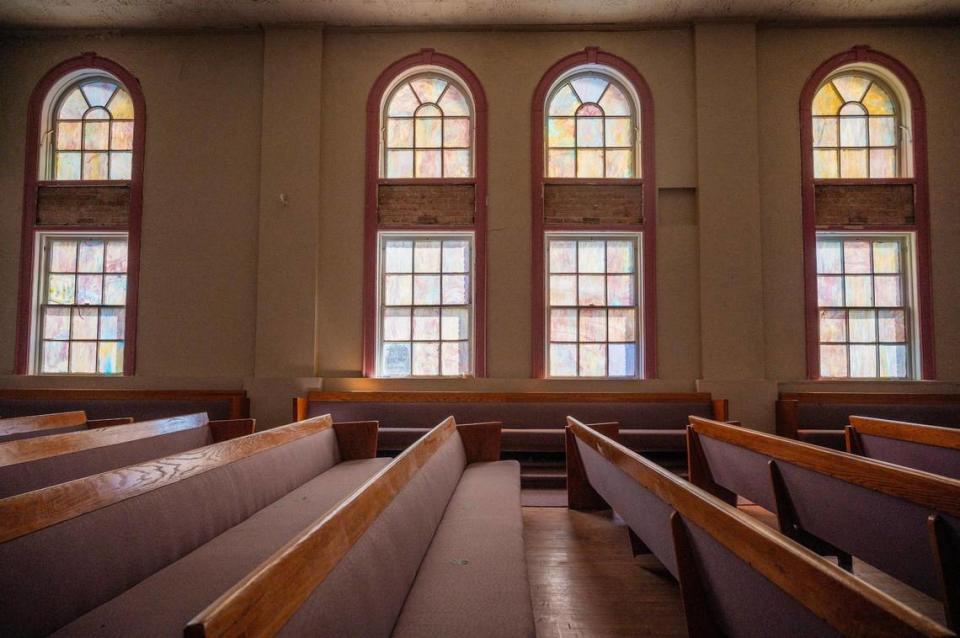
In 1924, members of the American Legion interrupted a meeting, because they thought the attendees were communists discussing a bombing in Russia, according to the Kansas City Times.
A legionnaire shouted, “Hey, brother: are you an American?”
The speaker was and when asked why he wasn’t presenting in “the American language,” he replied, “because many persons in my audience wouldn’t understand me.”
The Times concluded, “the legionnaire apologized for interrupting the speaker and the delegation filed out of the hall.”
In 1934, carpenters’ union leader J.M. Stubblefield was inside a Carpenters’ Hall telephone booth when he was shot dead. The assassination was never solved, though reports at the time alleged it was provoked by rivaling union factions.
The unique building today
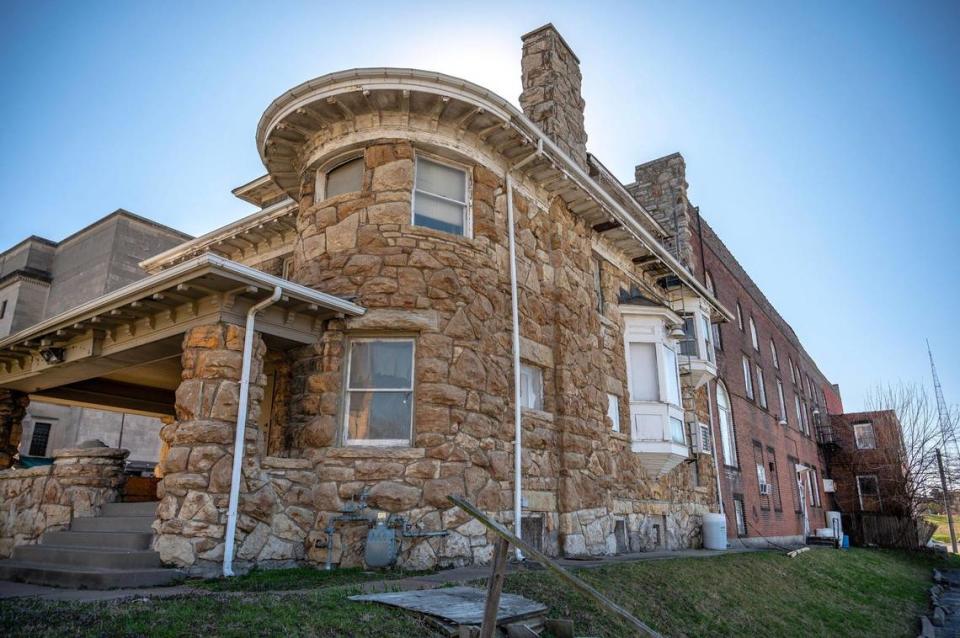
By the start of World War II, the dances and parties slowed down. Unions used the space until the ‘80s, and New Landmark United in Christ Church moved in after.
Now, the wood floor creaks even under the carpeted aisles as Tony Caldwell makes his way through the high-ceilinged former dance hall.
From a wooden pew, Caldwell takes in the space — a sign above the entrance said “maximum occupancy 791.” Twelve two-story windows illuminate the room, with an arching proscenium above the stage.
Caldwell said he only occasionally uses the room, most recently for a drill team performance. Evidence of the space’s 100-year-life is visible: fallen plaster, scuffed floors.
Caldwell has worked on restoring the space in the four years he’s owned it between the Justice and Dignity Center’s food distribution and counseling programs. Caldwell said the organization was looking for a larger space where they could bring semis to. In the basement and house area of the building, volunteers cook for seniors every Thursday and hold community meetings every Monday.
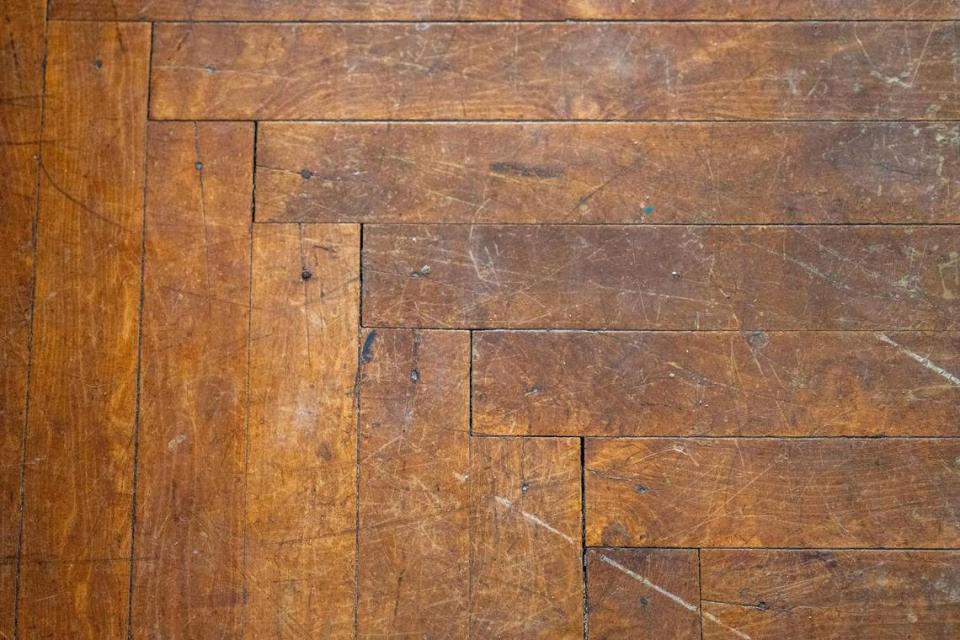
Looking at the stage, he pondered the building’s history.
“I’m thinking about how they had to have a band up there in the top level. At that time-point, there was always live bands.”
While music only occasionally rings out through the former Carpenter Hall space, their songs, like the accordion tones of Duke Wellington, live on in imagination.
Do you have a Kansas City oddity you want uncovered? Contact the Service Journalism team at kcq@kcstar.com.

